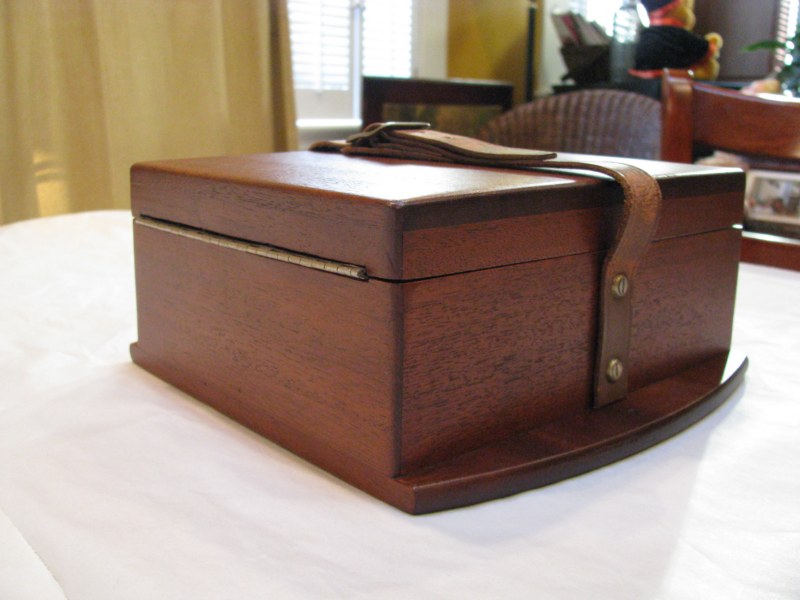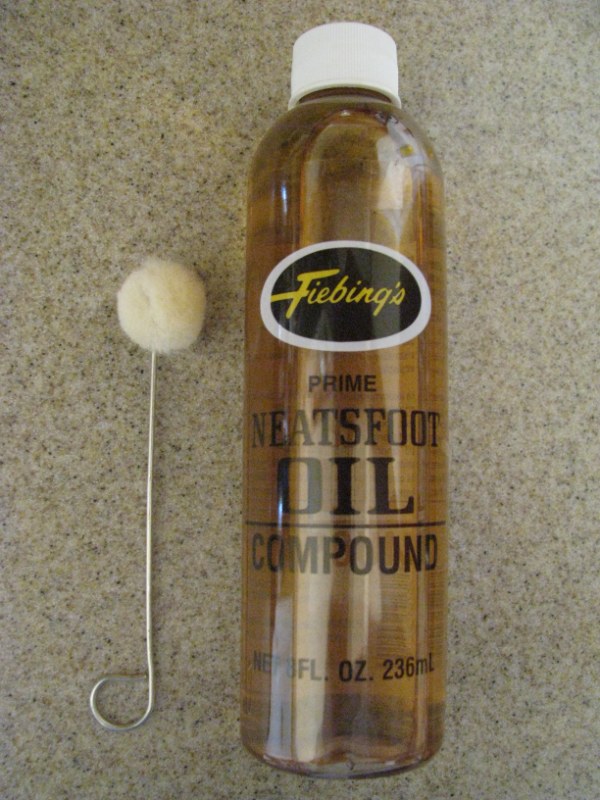
| WWT Shows | CLICK TO: Join and Support Internet Horology Club 185™ | IHC185™ Forums |

|
• Check Out Our... • • TWO Book Offer! • |
Welcome Aboard IHC185™  Internet Horology Club 185
Internet Horology Club 185  IHC185™ Discussion Site Main Page
IHC185™ Discussion Site Main Page  Horological Discussions, Questions and Answers
Horological Discussions, Questions and Answers  Military Timepiece Discussions - EXCLUSIVE!
Military Timepiece Discussions - EXCLUSIVE!  Restoration Project - Hamilton Model 22 Chronometer Watch - outer and inner boxes.
Restoration Project - Hamilton Model 22 Chronometer Watch - outer and inner boxes.
 Internet Horology Club 185
Internet Horology Club 185  IHC185™ Discussion Site Main Page
IHC185™ Discussion Site Main Page  Horological Discussions, Questions and Answers
Horological Discussions, Questions and Answers  Military Timepiece Discussions - EXCLUSIVE!
Military Timepiece Discussions - EXCLUSIVE!  Restoration Project - Hamilton Model 22 Chronometer Watch - outer and inner boxes.
Restoration Project - Hamilton Model 22 Chronometer Watch - outer and inner boxes.Go  | New Topic  | Find-Or-Search  | Notify  | Tools  | Reply to Post  |  |
Greetings all, If I have the opportunity to purchase an example or project that needs restoration I try my best to get that piece. I have ventured in case restoration before with a Hamilton Navigation Watch box and now I tried another watch box. I am one that prefers an example in original condition but if that original condition is beyond acceptable or unusable I do prefer restoration. I would much rather see a piece as it was new rather than scrapped or abandoned. I purchased this outer box for the Hamilton Model 22 Deck watch and it was in pieces: 27 pieces to be exact: 1 upper lid 1 lower box 6 interior green horsehair pads 2 leather belt straps 4 belt screws 4 belt screw grommets 1 latch (2 pieces) 4 latch screws 1 Hamilton name plate 2 name plate screws The box lid appeared to have been previously stripped of all old varnish and lacquer. I used “Zinsser” Furniture Refinisher to gently remove the lacquer and varnish from the bottom box to match the pair. This process takes some time and several applications as there is no scraping involved, just #0000 fine steel wool and a gentle cloth wipe. Then a “MinWax” “Red Mahogany” stain was applied to match the original color. Interesting note: There was the number 569 written on the inner lid and bottom box under where the pads were. The boxes were lacquered, not polyurethaned, as the original finish was lacquer. I used “MinWax” Clear Aerosol Lacquer. This product is exceptional. There is no sanding between coats and the lacquer almost self levels itself without bubbling like with traditional brushes on polyurethane. I used a “Clear Satin” finish as I did not want a high gloss for this piece. The horsehair pads were installed next. First the upper lid pad and then the bottom box pad. The side pads rest on top of the bottom pad. The side pads must be installed a certain way as the side pads are shorter in length from front and back pads. These were installed using a contractors glue by “Liquid nails”. I used my inner model 22 box to assist with the setting and drying of the pads as some assistance is needed. After the pads had set all the hardware was easily installed: Latches first, name plate and THEN the rear hinge. It is best to work on the two halves separately as much as possible. The belts were installed last: Buckle half installs on the left side and other on right using the screws and screw grommets. I was thinking of applying some leather conditioner to the belts as they tend to flake. I would not want further deterioration of these belts. I wish I took more pictures of the restoration process to help those that may have questions with their restorations but my mind was focused on this project and the pictures were an after thought. I will post what I have. If anyone has any questions regarding their boxes construction and wish some help or are thinking about restoring their example I would be happy to help in any way. I have attached some pictures of before, during and after. I do know the Model 22 shown is an U.S.A.A.F. model and did not originally have an outer wooden box. I could not resist picking up the project. I guess I am on the look out for a US Navy/BU Ships example now! Regards to all! Mike Payant  | |||
|
Another view of the finished box.  | ||||
|
Before with the box in pieces.  | ||||
|
Tools of the craft.  | ||||
|
The # 569 written inside the lid and bottom case.  | ||||
|
Another view  | ||||
|
Rear view.  | ||||
|
| IHC Life Member |
Very, Very Nice!! | |||
|
| IHC Life Member |
Great job Michael! Restoration Perfection! I like it. Steve | |||
|
Thank you Roger and Steven, I was just wondering if anyone knew the intention or purpose if the leather belts that go over the top of the lid. Was it a carrying handle or a secondary safety system to keep the lid closed? The latch that is used is quite strong and the leather does seen to be stretched a bit leaning toward handle use. Any ideas or other examples to be shown to help make an argument either way? Thanks all. | ||||
|
Nice job Michael, a bit to clean for my likings, but it´s yours By the way heres a BU ships for the case BU Chrono My WWW collection is now complete, time to look for new ventures! | ||||
|
| IHC Vice President Pitfalls Moderator IHC Life Member |
Outstanding restoration Michael! Best Regards, Ed | |||
|
Thank you Werner and Edward, Also Werner thank you for the heads up on the BU Ships Chrono. Mike | ||||
|
Greeting all, In the first post of this thread I mentioned I may attempt to condition the leather straps on the restored box. They were flaking and deteriorating with even the gentlest use. I went to my local cobbler and by his recommendation I used a product by “Fiebings” called “Prime Neatsfoot Oil Compound.” This product is great and conditioned the belts wonderfully without greasiness or residue. The belts are now supple and pliable with no danger of cracking and flaking. Just wanted to share this just in case any members had question regarding proper leather conditioning products. Regards, Mike  | ||||
|
I´ve already revealed the answer to Michael, but here´s for anyone not in the know; Military Timepieces, Marvin E. Whitney...Page 396 ...Both instruments were fitted in a hinged-lid, brass-fitted mahogany carrying or transport case, padded on the inside and equipped with leather carrying straps. A small plastic instruction plate was mounted on the inside bottom area ofof the glass lid section for the gimbal type and on the window lid of the non gimbal type. Slide-snap catches were used on the mounting boxes and a hook and eyeler catches on the carrying cases. Both the mounting and carrying boxes were made by Regent Specialities Company, Rochester, New York... My WWW collection is now complete, time to look for new ventures! | ||||
|
Like I mentioned above when I started this topic I love taking advantage of purchasing the item that needs restoration. I completed the outer box for the Hamilton Model 22 B.U. Ships Chronometer watch, so then I was on the look out for the inner box. I was able to pick up this example in need of some help. Upon closer examination when the box arrived it needed more help than I thought. The outside of the case was extremely dry and brittle and the lacquer was cracking off just by handling it. (The photos can not show the full extent of damage.) The chronometer instruction plate with screws was missing also. The inside of the box was in similar condition. The Plexiglas had fine cracks and was yellowed. The inner pads were in rough shape, the felt coverings in particular, and had a strange moldy odor but the foam rubber forms below were in surprisingly good shape. There was a cigarette looking burn hole in the felt of the lower pad that needed repair. Unfortunately the lid and lower box had a thick glue substance on the inner walls and the flaking green felt was covering it. This is what was done: (1) All hardware was removed and cleaned. Upon further inspection the latch button spring was bent preventing smooth works. It was replaced. (2)The inner pads were taken out and felt coverings removed. (3) They were carefully cleaned, repaired and re-adhered to the foam rubber square pads. (4) The Plexiglas was taken out by removing the 4 small quarter-round moldings that secured it into the lid. (5) The box was stripped of the old dry lacquer, cleaned and re-lacquered. (6) All steps were reversed in its re-assembly with new Plexiglas and NOS chronometer instruction plate installed last. The pair is now completed and matched. I had the option of new felt pads I acquired from Gary Sellick of Ship’s Clock Cabinetry but the new pads were an aqua marine, turquoise, bluish green color and did not match the outer boxes’ pads. I opted to keep the originals. If anyone is looking for the aqua marine color complete upper pad (felt and form) and bottom pad (felt only) replacement please contact me. I also have another set of the 4 small quarter rounds that hold the Plexiglas down and in place if needed. I took you all through this little adventure of mine because I wanted to share what I have learned about these chronometer boxes. I have learned about everything from their deconstruction back to construction, the quality of the materials involved and the fine craftsmanship used to build these timeless treasures. Quality in work not often seen today. If anyone has any specific or other questions about the restoration, construction or materials that make of these cases I will be happy to share what I know. All that’s missing now is the Bureau of Ships Chronometer!  | ||||
|
Side view  | ||||
|
In the outer carrying case  | ||||
|
| Administrative Assistant |
Nice job! Thanks for sharing. | |||
|
Thank you Debbie, nice to hear from you. Also the complete upper lid cushion, lower pad felt and 4 wooden quarter round inserts to hold the Plexiglas that were offered in the previous post are now spoken for and unavailable. Regards to all! | ||||
|
| Powered by Social Strata |
| Your request is being processed... |
|
Welcome Aboard IHC185™  Internet Horology Club 185
Internet Horology Club 185  IHC185™ Discussion Site Main Page
IHC185™ Discussion Site Main Page  Horological Discussions, Questions and Answers
Horological Discussions, Questions and Answers  Military Timepiece Discussions - EXCLUSIVE!
Military Timepiece Discussions - EXCLUSIVE!  Restoration Project - Hamilton Model 22 Chronometer Watch - outer and inner boxes.
Restoration Project - Hamilton Model 22 Chronometer Watch - outer and inner boxes.
 Internet Horology Club 185
Internet Horology Club 185  IHC185™ Discussion Site Main Page
IHC185™ Discussion Site Main Page  Horological Discussions, Questions and Answers
Horological Discussions, Questions and Answers  Military Timepiece Discussions - EXCLUSIVE!
Military Timepiece Discussions - EXCLUSIVE!  Restoration Project - Hamilton Model 22 Chronometer Watch - outer and inner boxes.
Restoration Project - Hamilton Model 22 Chronometer Watch - outer and inner boxes.©2002-2025 Internet Horology Club 185™ - Lindell V. Riddle President - All Rights Reserved Worldwide

